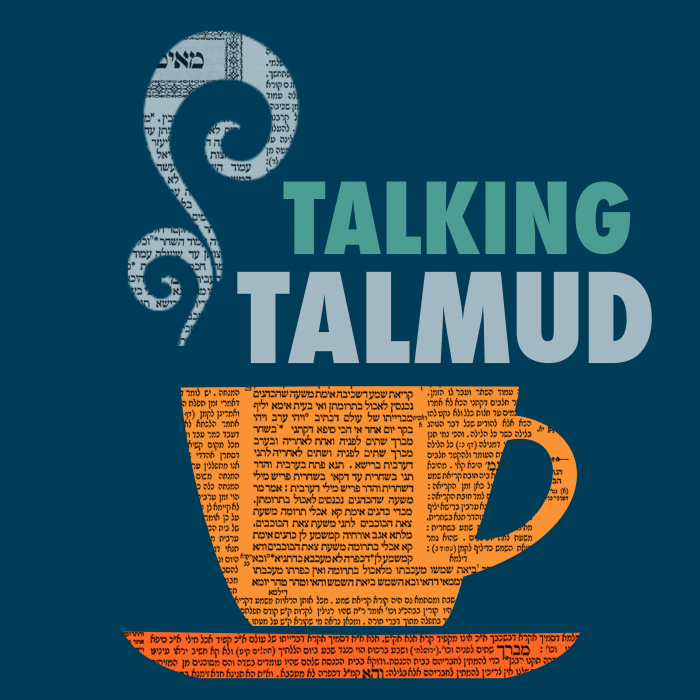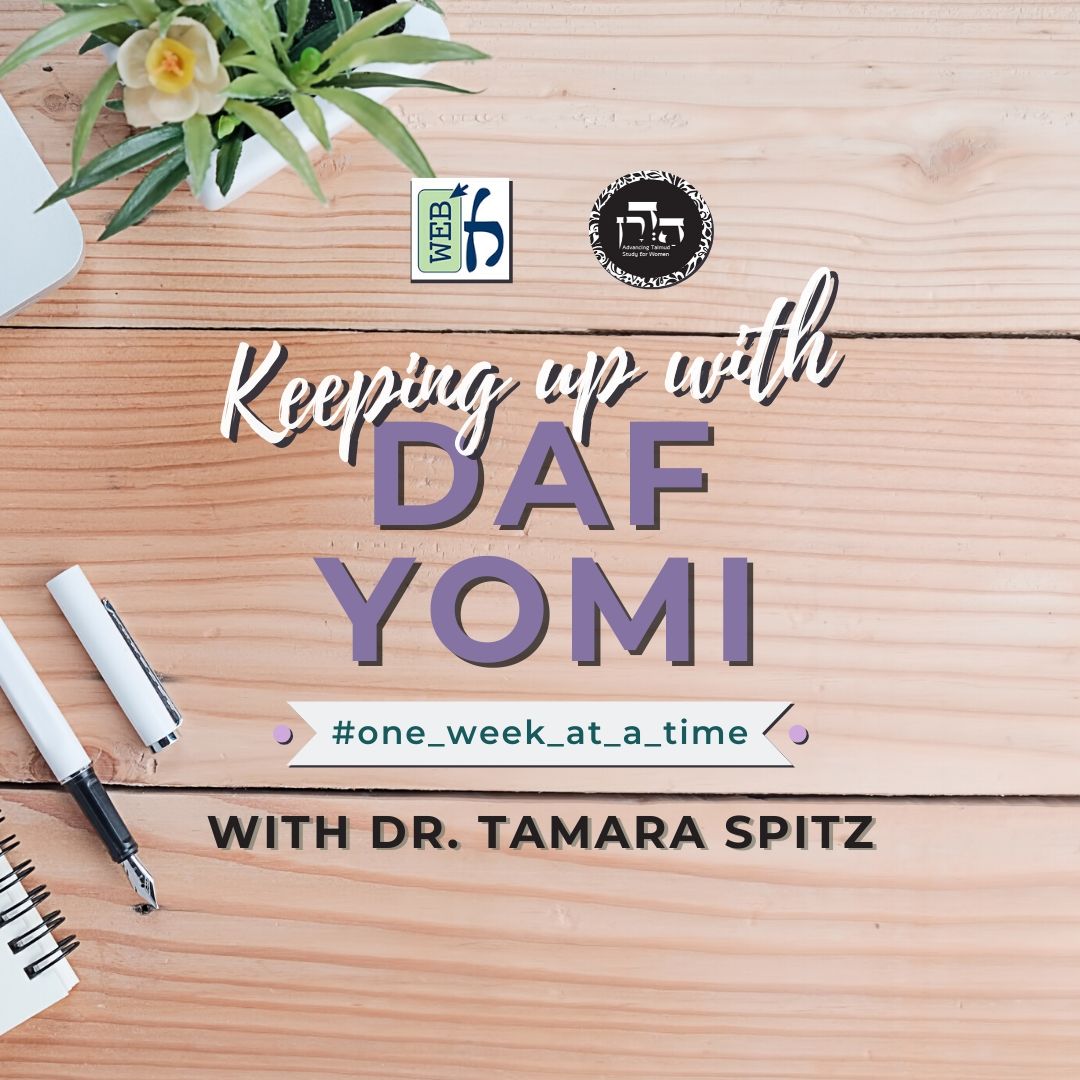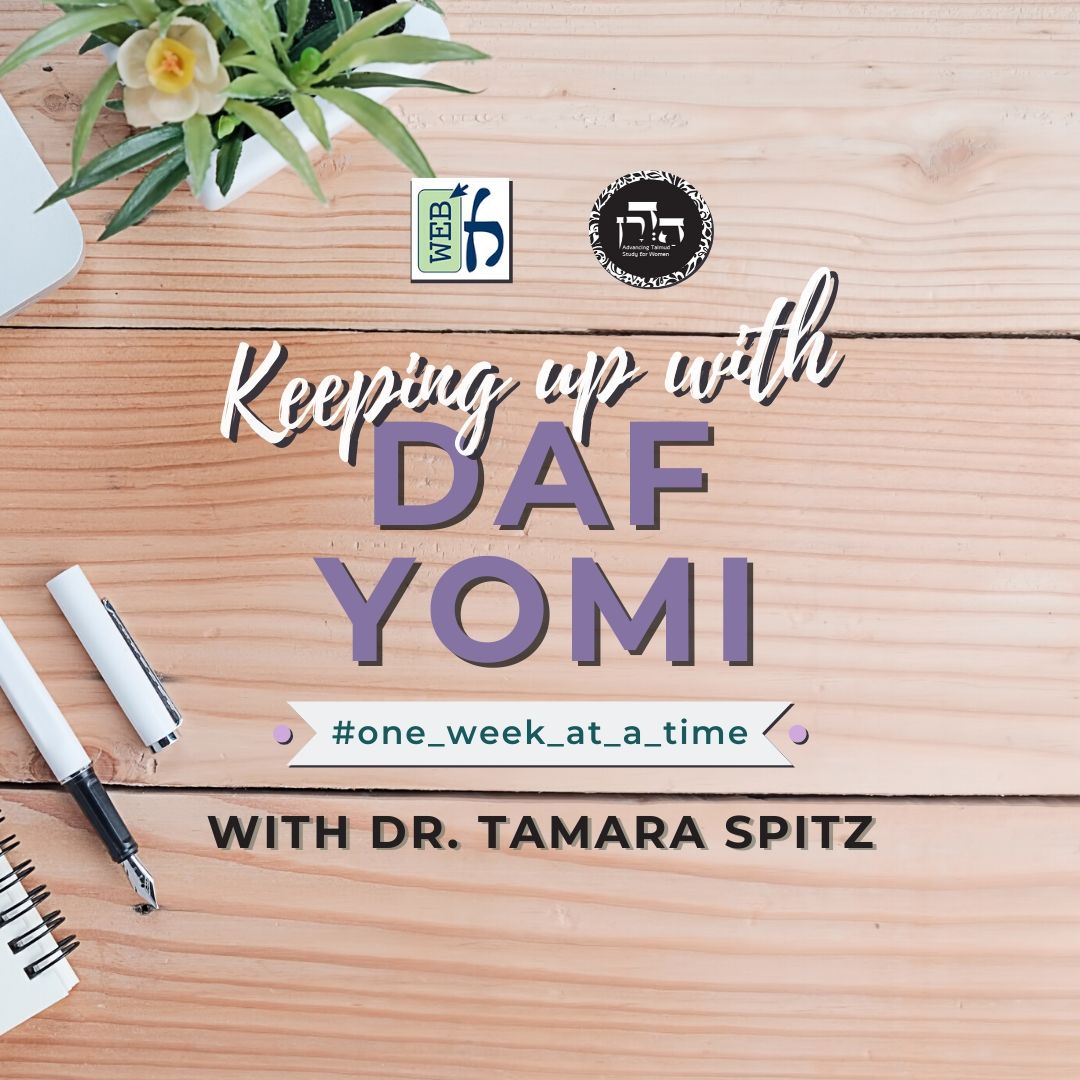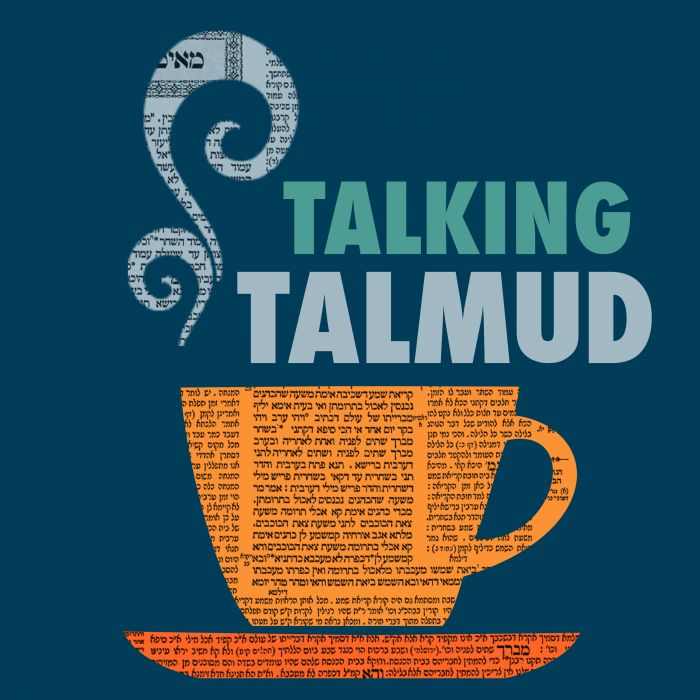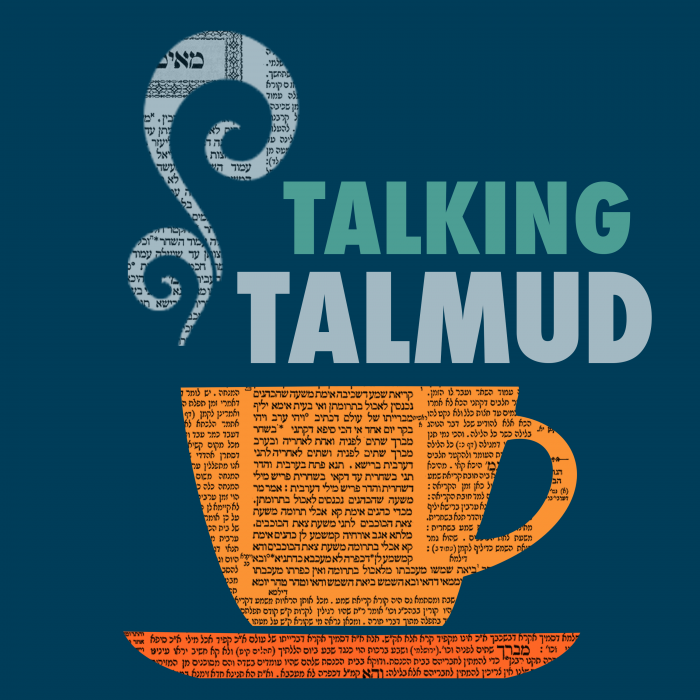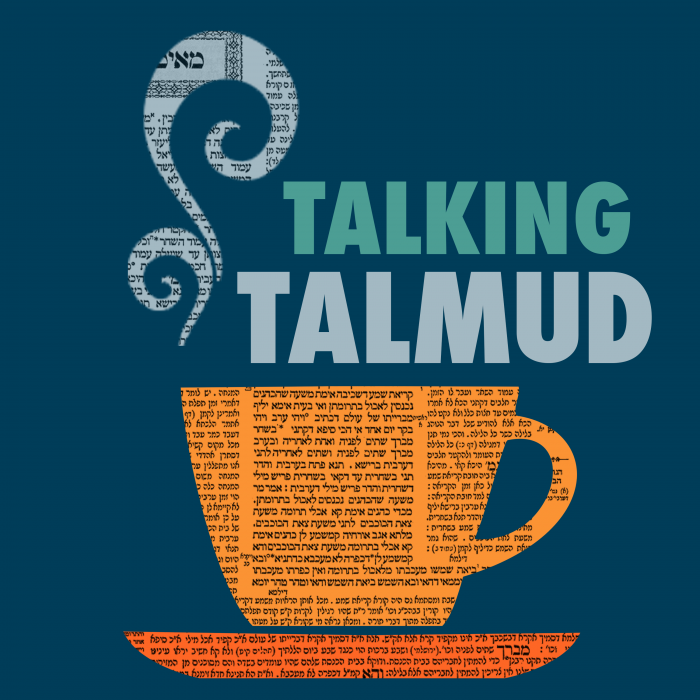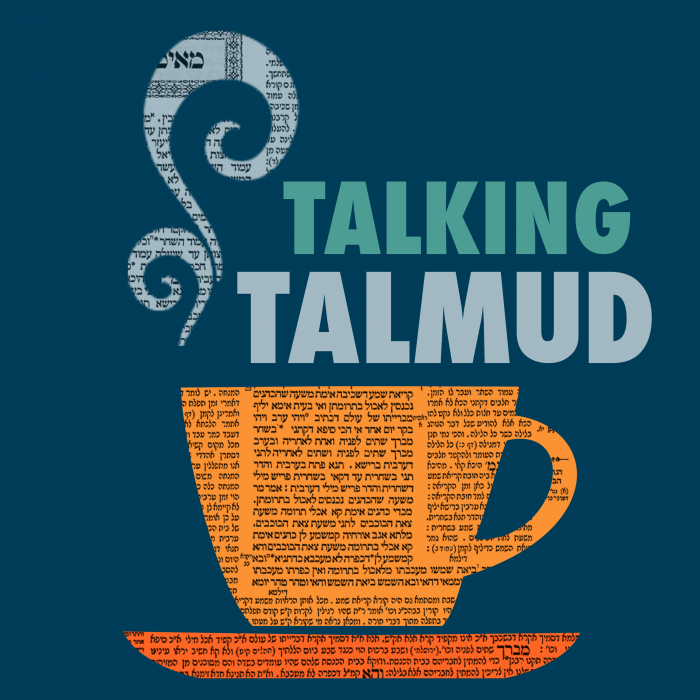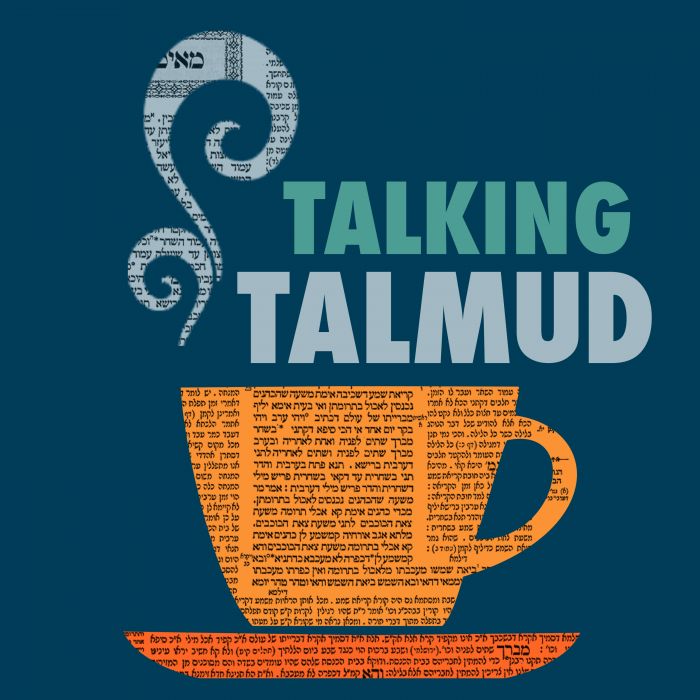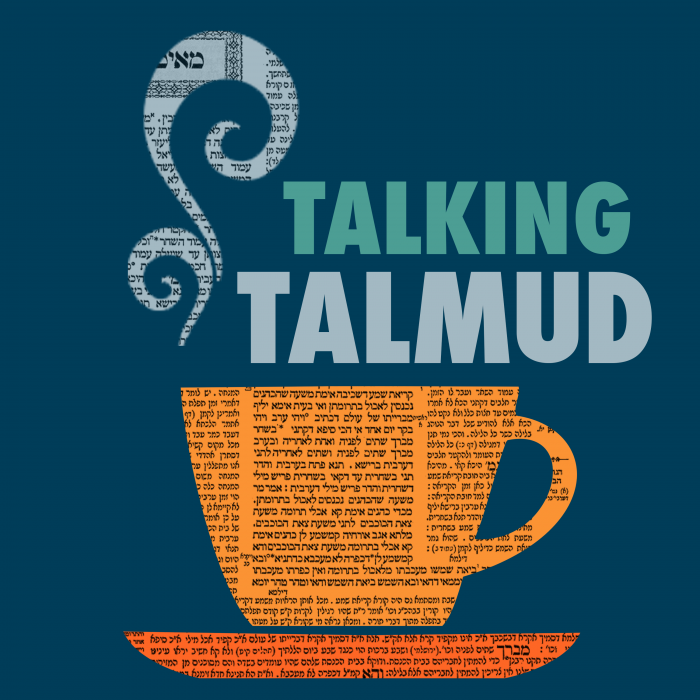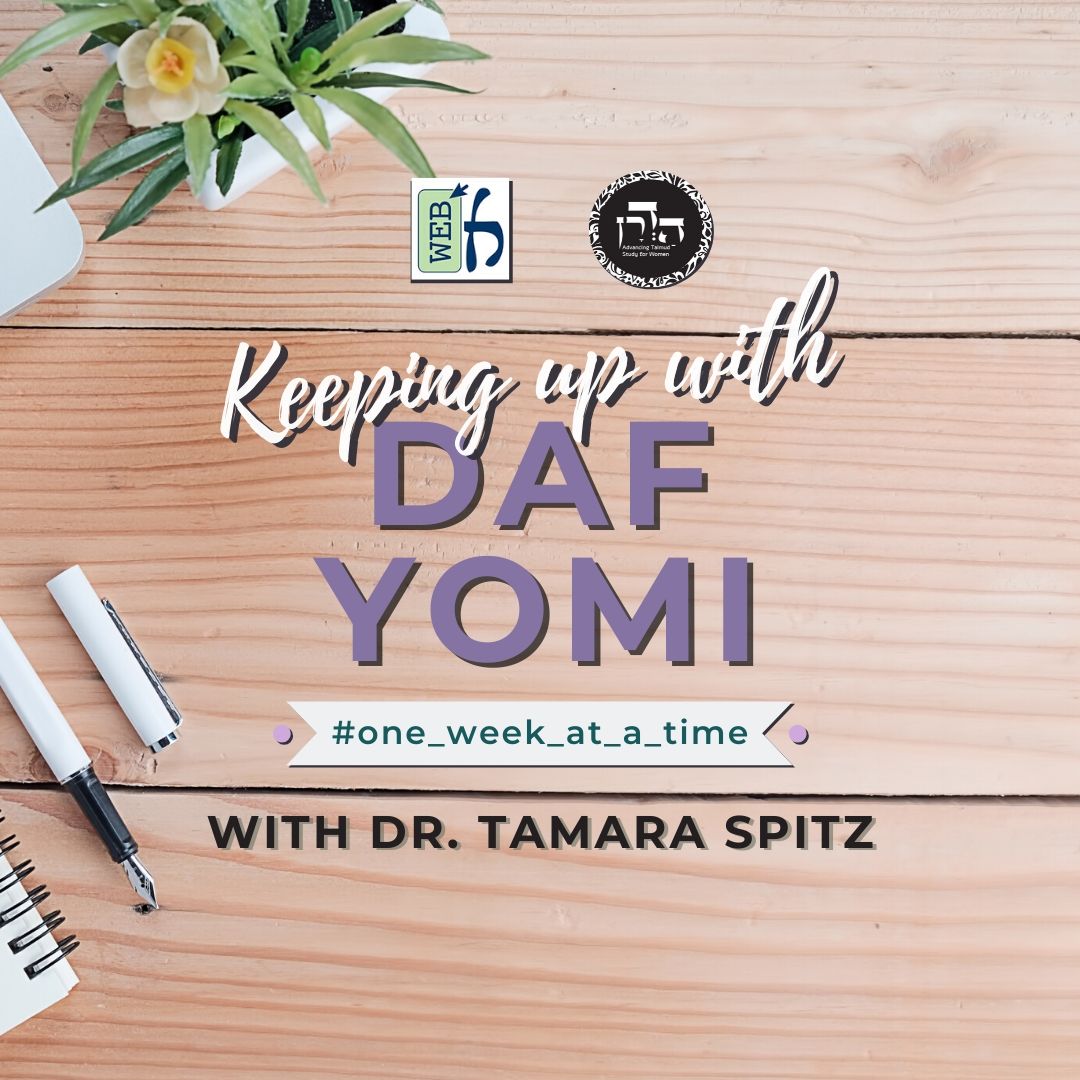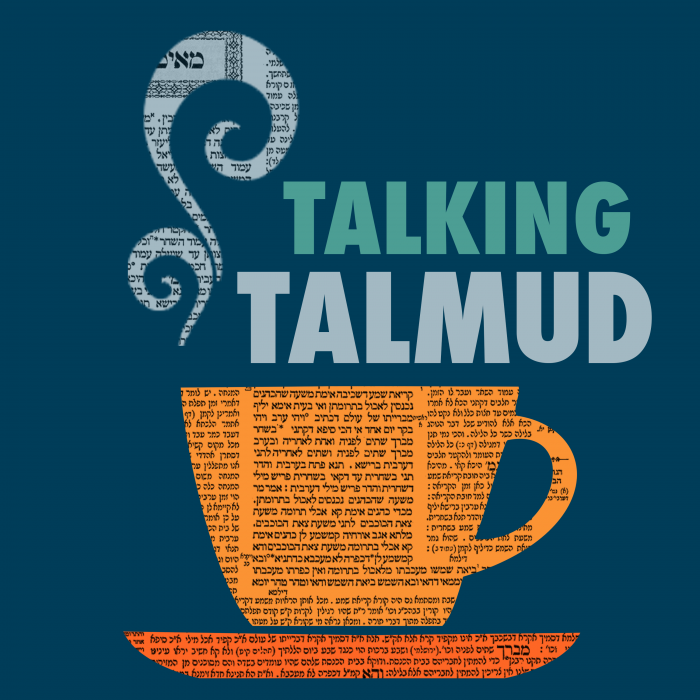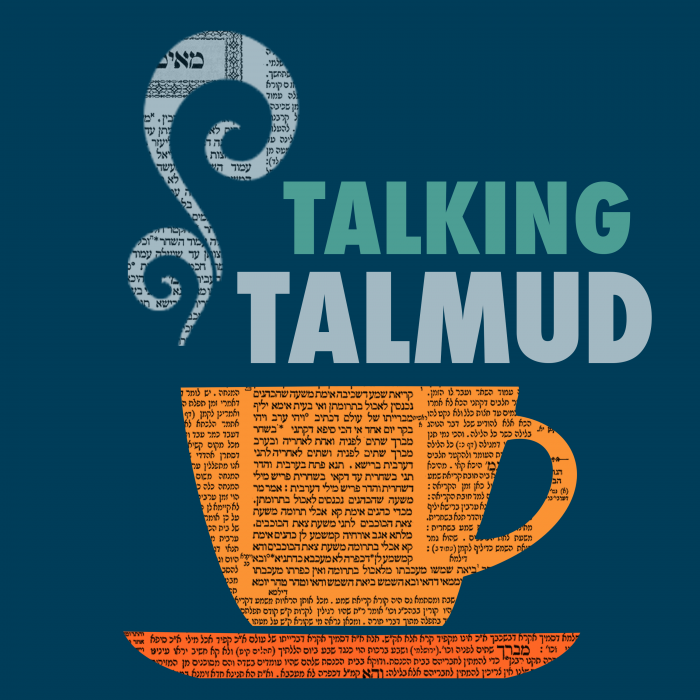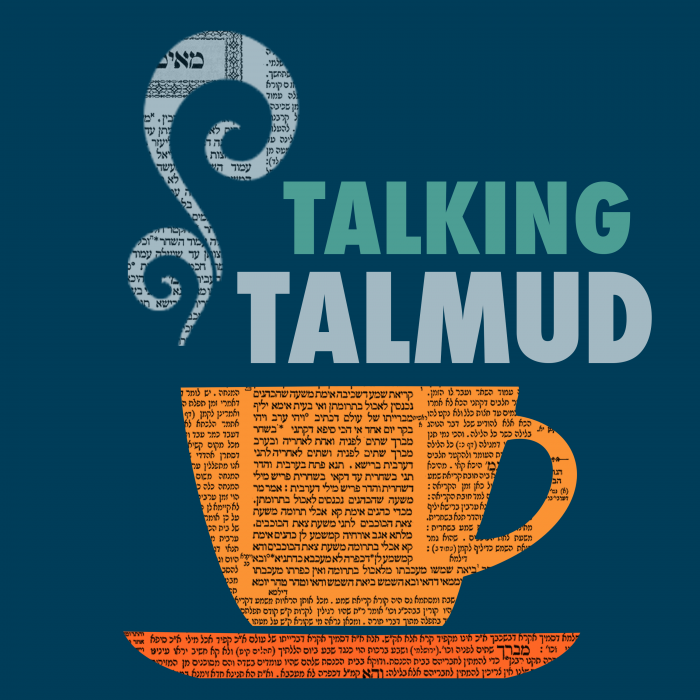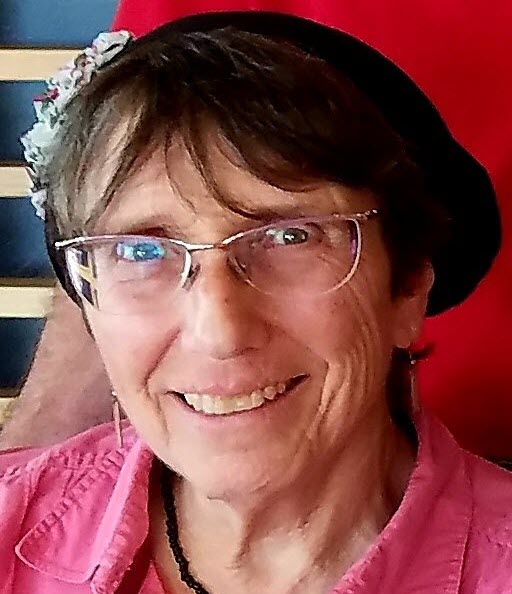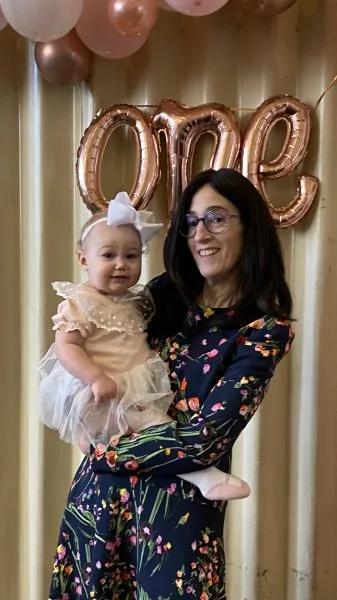How is the waving performed? Which item goes on the top,middle and bottom? Which directions? What is the reason behind the wavings? In the Shavuot sacrifice, are the wavings before the lambs are slaughtered the same as the wavings after or not?
This week’s learning is sponsored by Caroline Bollag l’ilui nishmat Pinchas ben Menashe Peyser.
Want to dedicate learning? Get started here:

Today’s daily daf tools:
This week’s learning is sponsored by Caroline Bollag l’ilui nishmat Pinchas ben Menashe Peyser.
Today’s daily daf tools:
Delve Deeper
Broaden your understanding of the topics on this daf with classes and podcasts from top women Talmud scholars.
New to Talmud?
Check out our resources designed to help you navigate a page of Talmud – and study at the pace, level and style that fits you.
The Hadran Women’s Tapestry
Meet the diverse women learning Gemara at Hadran and hear their stories.
Menachot 62
כֵּיצַד עוֹשֶׂה? מַנִּיחַ אֵימוּרִין עַל פִּיסַּת הַיָּד, וְחָזֶה וָשׁוֹק עֲלֵיהֶן, וּבְכׇל מָקוֹם שֶׁיֵּשׁ לֶחֶם – הַלֶּחֶם מִלְּמַעְלָה.
The Gemara asks: How does one perform the ritual of waving? First he places the sacrificial portions on the palm of the hand, and puts the breast and the thigh on them. And in any place, i.e., with regard to any offering, where there are loaves brought with together with the animal, the loaves are placed on the top.
הֵיכָא אָמַר רַב פָּפָּא: בְּמִלּוּאִים.
The Gemara asks: Where is it stated that the loaves must be placed on the top? Rav Pappa says: This is stated explicitly with regard to the ram offered at the inauguration of the priests, as the verse states: “And he took the fat, and the tail, and all the fat that was upon the inward, and the lobe of the liver, and the two kidneys, and their fat, and the right thigh. And out of the basket of matzot that was before the Lord he took one matza, and one cake of oiled bread, and one wafer, and placed them on the fat, and upon the right thigh. And he put it all upon the hands of Aaron, and upon the hands of his sons, and waved them for a wave offering before the Lord” (Leviticus 8:25–27).
מַאי טַעְמָא? אִילֵּימָא מִשּׁוּם דִּכְתִיב: ״שׁוֹק הַתְּרוּמָה וַחֲזֵה הַתְּנוּפָה עַל אִשֵּׁי הַחֲלָבִים יָבִיאוּ לְהָנִיף תְּנוּפָה״, וְהָכְתִיב: ״אֶת הַחֵלֶב עַל הֶחָזֶה יְבִיאֶנּוּ״!
The Gemara inquires: What is the reason, i.e., from where is it learned, that the sacrificial portions should be placed on the bottom, and the breast and thigh on top of them? If we say it is because it is written: “The thigh of heaving and the breast of waving they shall bring upon the offerings of the fat made by fire, to wave it for a wave offering before the Lord” (Leviticus 10:15), which indicates that the breast and thigh are placed on top of the fats, that is insufficient: But isn’t it written elsewhere: “The fat upon the breast he shall bring, that the breast may be waved for a wave offering before the Lord” (Leviticus 7:30)? That verse leads to the opposite conclusion, as it indicates that the fats are to be placed on top of the breast.
אָמַר אַבָּיֵי: הָהוּא דְּמַיְיתֵי לֵיהּ כֹּהֵן מִבֵּית הַמִּטְבָּחַיִים, וְרָמֵי לֵיהּ.
Abaye said: That second verse is not referring to the placement of the portions for waving. Rather, it describes their placement when the priest brings the parts of the offering from the slaughtering area in order to be waved. This priest carries the breast and thigh below the fats, and accordingly, when he overturns these parts onto the hand of the priest who will wave them, the fat will be under the breast and thigh.
וְהָכְתִיב ״וַיָּשִׂימוּ אֶת הַחֲלָבִים עַל הֶחָזוֹת״? הָהוּא דְּיָהֵיב לֵיהּ לְכֹהֵן אַחֲרִינָא, וְאָזֵיל וּמַקְטַר לֵיהּ.
The Gemara asks: But isn’t it written: “And they put the fat upon the breasts” (Leviticus 9:20), which also indicates that the fat is to be on top of, not beneath, the breast and thigh? The Gemara answers: That verse is referring to the stage when the priest who waved them gives them to another priest, who brings the sacrificial portions up to the altar. Once again the parts are turned over in this exchange, so that the sacrificial fats are on top of the breast. And this third priest then goes and burns the sacrificial portions on the altar.
וְהָא קָא מַשְׁמַע לַן, דְּבָעֵינַן שְׁלֹשָׁה כֹּהֲנִים, מִשּׁוּם דִּכְתִיב: ״בְּרׇב עָם הַדְרַת מֶלֶךְ״.
The Gemara adds: And this teaches us that we require three priests to perform this service: One to bring the parts from the slaughtering area, one to wave them, and a third to burn them upon the altar. The reason why all three acts cannot be performed by a single priest is because it is written: “In the multitude of people is the King’s glory” (Proverbs 14:28). If a larger number of priests are involved in the Temple service, this represents greater glory for God. Therefore, it is preferable for the service to be carried out by three priests rather than one.
וּשְׁתֵּי הַלֶּחֶם וּשְׁנֵי כִּבְשֵׂי עֲצֶרֶת [וְכוּ׳]. תָּנוּ רַבָּנַן: ״וְהֵנִיף הַכֹּהֵן אֹתָם עַל לֶחֶם הַבִּיכּוּרִים״,
§ The mishna teaches: And the two loaves and the accompanying peace offering of two lambs brought on Shavuot also require waving. With regard to this waving, the Sages taught in a baraita: The verse states: “And the priest shall wave them upon the bread of the first fruits for a wave offering before the Lord, upon the two lambs; they shall be holy to the Lord for the priest” (Leviticus 23:20).
יָכוֹל יַנִּיחַ כְּבָשִׂים עַל גַּבֵּי הַלֶּחֶם? תַּלְמוּד לוֹמַר ״עַל שְׁנֵי כְּבָשִׂים״. אִי ״עַל שְׁנֵי כְּבָשִׂים״ יָכוֹל לֶחֶם עַל גַּבֵּי כְּבָשִׂים? תַּלְמוּד לוֹמַר ״עַל לֶחֶם הַבִּיכּוּרִים״.
One might have thought that the priest who performs the waving must place the lambs on top of the bread for the waving. Therefore, the verse states: “A wave offering before the Lord upon the two lambs,” which indicates that the two loaves must be on top of the lambs. If the verse had stated only: “Upon the two lambs,” one might have thought the priest must place the bread on top of the lambs. Therefore, the verse states: “Upon the bread of the first fruits,” which indicates that the loaves are to be placed under the lambs for waving.
נִישְׁתַּקֵּל הַכָּתוּב, וְאֵינִי יוֹדֵעַ אִם לֶחֶם עַל גַּבֵּי כְּבָשִׂים, וְאִם כְּבָשִׂים עַל גַּבֵּי לֶחֶם. מָה מָצִינוּ בְּכׇל מָקוֹם – לֶחֶם לְמַעְלָה, אַף כָּאן לֶחֶם לְמַעְלָה. הֵיכָא? אָמַר רַב פָּפָּא: בְּמִילּוּאִים.
Consequently, the verse is evenly balanced, as two contradictory conclusions can be derived from it, and I do not know whether the bread should be on top of the lambs, or whether the lambs should be on top of the bread. The baraita resolves the contradiction: Just as we find everywhere that waving is performed that the bread is placed above the other portions, so too, in the case of the two loaves and the two lambs, the bread is placed above the lambs. The Gemara interrupts its citation of the baraita to ask: Where is it stated that the loaves must be placed on top? Rav Pappa says: This is stated explicitly with regard to the ram offered at the inauguration of the priests.
רַבִּי יוֹסֵי בֶּן הַמְשׁוּלָּם אוֹמֵר: כְּבָשִׂים לְמַעְלָה, וּמָה אֲנִי מְקַיֵּים ״עַל שְׁנֵי כְּבָשִׂים״ – לְהוֹצִיא שִׁבְעָה.
The Gemara resumes its citation of the baraita. Rabbi Yosei ben HaMeshullam disagrees with the previous ruling, and says: It is the lambs that are placed above, and the two loaves underneath them. And how do I realize the meaning of the phrase: “Upon the two lambs,” which seems to indicate that the two loaves are to be placed above the lambs and not under them? Rabbi Yosei ben HaMeshullam explains: This verse teaches that the requirement to wave the lambs together with the loaves applies only to the two lambs sacrificed as communal peace offerings on Shavuot, to exclude the seven other lambs, brought as burnt offerings, which are not to be waved with the loaves.
חֲנִינָא בֶּן חֲכִינַאי אוֹמֵר: מַנִּיחַ שְׁתֵּי הַלֶּחֶם בֵּין יַרְכוֹתֵיהֶן שֶׁל כְּבָשִׂים וּמֵנִיף, וְנִמְצָא מְקַיֵּים שְׁנֵי מִקְרָאוֹת הַלָּלוּ: לֶחֶם עַל גַּבֵּי כְּבָשִׂים, וּכְבָשִׂים עַל גַּבֵּי הַלֶּחֶם. אָמַר רַבִּי: לִפְנֵי מֶלֶךְ בָּשָׂר וְדָם אֵין עוֹשִׂין כֵּן, לִפְנֵי מֶלֶךְ מַלְכֵי הַמְּלָכִים הַקָּדוֹשׁ בָּרוּךְ הוּא עוֹשִׂין כֵּן?! אֶלָּא מַנִּיחַ זֶה בְּצַד זֶה וּמֵנִיף.
Ḥanina ben Ḥakhinai says there is a different answer: The priest places the two loaves between the thighs of the two lambs and waves them. And in this manner it is found that he realizes the meaning of both of these two verses, as the bread is on top of the lambs and the lambs are also on top of the bread. Rabbi Yehuda HaNasi says, in objection to this opinion: One would not do so, i.e., place bread that had been placed between the thighs of lambs, before a flesh and blood king; should one do so before the King of kings, the Holy One, Blessed be He? Rather, he places the two loaves and the two lambs alongside each other, and waves them together, and thereby fulfills the requirements of the verses in a respectful manner.
וְהָא בָּעֵינַן ״עַל״, אֲמַר לֵיהּ רַב חִסְדָּא לְרַב הַמְנוּנָא, וְאָמְרִי לַהּ רַב הַמְנוּנָא לְרַב חִסְדָּא: רַבִּי לְטַעְמֵיהּ, דְּאָמַר ״עַל״ בְּסָמוּךְ.
The Gemara raises an objection to the opinion of Rabbi Yehuda HaNasi: But we require fulfillment of the term “upon [al]” in the verse, either by placing the bread upon the lambs or the lambs upon the bread. In response, Rav Ḥisda says to Rav Hamnuna, and some say that Rav Hamnuna says to Rav Ḥisda: With this opinion, Rabbi Yehuda HaNasi conforms to his standard line of reasoning, as he says that the word al can mean next to.
דְּתַנְיָא, ״וְנָתַתָּ עַל הַמַּעֲרֶכֶת לְבֹנָה זַכָּה״, רַבִּי אוֹמֵר: ״עַל״ בְּסָמוּךְ, אַתָּה אוֹמֵר ״עַל״ בְּסָמוּךְ, אוֹ אֵינוֹ אֶלָּא ״עַל״ מַמָּשׁ? כְּשֶׁהוּא אוֹמֵר ״וְסַכֹּתָ עַל הָאָרֹן אֶת הַפָּרֹכֶת״, הֱוֵי אוֹמֵר ״עַל״ בְּסָמוּךְ.
This is as it is taught in a baraita: With regard to the shewbread, the verse states: “And you shall put pure frankincense upon [al] each row” (Leviticus 24:7). Rabbi Yehuda HaNasi says: Al in this instance means: Next to. The baraita asks: Do you say that al means: Next to? Or perhaps it means only actually upon? The baraita explains: When it says: “And you shall put there the Ark of the Testimony, and you shall place a cover over [al] the Ark with the Curtain” (Exodus 40:3), the word al cannot mean upon, as the Curtain that separated the Sanctuary from the Holy of Holies was hanging near the Ark, not placed on top of it. Therefore, you must say that al means next to.
מוֹלִיךְ וּמֵבִיא, מַעֲלֶה וּמוֹרִיד [וְכוּ׳]. אָמַר רַבִּי חִיָּיא בַּר אַבָּא, אָמַר רַבִּי יוֹחָנָן: מוֹלִיךְ וּמֵבִיא – לְמִי שֶׁהָרוּחוֹת שֶׁלּוֹ, מַעֲלֶה וּמוֹרִיד – לְמִי שֶׁהַשָּׁמַיִם וְהָאָרֶץ שֶׁלּוֹ.
§ The mishna teaches that the two loaves and the two lambs are waved in the following manner: The priest places his two hands below the lambs, extends them to each of the four directions and brings them back, then raises and lowers them. Rabbi Ḥiyya bar Abba says that Rabbi Yoḥanan says: He extends the lambs and brings them back in order to dedicate them to He to Whom the four directions belong. He raises and lowers them in order to dedicate them to He to Whom the heavens and the earth belong.
בְּמַעְרְבָא מַתְנוּ הָכִי: אָמַר רַב חָמָא בַּר עוּקְבָא, אָמַר רַבִּי יוֹסֵי בַּר רַבִּי חֲנִינָא: מוֹלִיךְ וּמֵבִיא – כְּדֵי לַעֲצוֹר רוּחוֹת רָעוֹת, מַעֲלֶה וּמוֹרִיד – כְּדֵי לַעֲצוֹר טְלָלִים רָעִים.
In the West, Eretz Yisrael, they taught the idea like this: Rabbi Ḥama bar Ukva says that Rabbi Yosei bar Rabbi Ḥanina says: He extends the lambs and brings them back in order to request a halt to harmful winds and storms that come from all directions. Similarly, he raises and lowers them in order to halt harmful dews and rains that come from above.
אָמַר רַבִּי יוֹסֵי בַּר רַב אָבִין: זֹאת אוֹמֶרֶת שְׁיָרֵי מִצְוָה מְעַכְּבִים אֶת הַפּוּרְעָנוּת, דְּהָא תְּנוּפָה שְׁיָרֵי מִצְוָה הִיא, וְעוֹצֶרֶת רוּחוֹת רָעוֹת וּטְלָלִים רָעִים. אָמַר רַבָּה: וְכֵן לוּלָב.
Rabbi Yosei bar Rav Avin says: That is to say, i.e., it can be derived from here, that a non-essential mitzva helps prevent calamity, as waving is a non-essential mitzva; even if one failed to wave the loaves he has fulfilled his obligation, and nevertheless waving halts harmful winds and dews. Rava says: And one should conduct himself similarly with a lulav on the festival of Sukkot, i.e., he should extend and bring back and raise and lower the lulav, for the same reasons.
רַב אַחָא בַּר יַעֲקֹב מַמְטֵי לֵיהּ וּמַיְיתֵי לֵיהּ, וּמַחְוֵי הָכִי, וְאָמַר: ״גִּירָא בְּעֵינָא דְשִׂטְנָא״. וְלָאו מִילְּתָא הִיא, מִשּׁוּם דְּאָתֵי לְאִתְגָּרוֹיֵי בֵּיהּ.
The Gemara relates: Rav Aḥa bar Ya’akov would extend and bring back the lulav in this manner, and would say: I am hereby shooting an arrow in the eye of Satan, as despite Satan’s best efforts, the Jewish people continue to fulfill mitzvot joyously. The Gemara comments: It is not correct to say this, because this will induce Satan to come to incite the Jewish people to sin. Gloating about his victory over the evil inclination will lead Satan to redouble its efforts to corrupt them.
תָּנוּ רַבָּנַן: זִבְחֵי שַׁלְמֵי צִבּוּר טְעוּנִין תְּנוּפָה לְאַחַר שְׁחִיטָה, וּתְנוּפָתָן כְּמוֹת שֶׁהֵן – דִּבְרֵי רַבִּי, וַחֲכָמִים אוֹמְרִים: בְּחָזֶה וָשׁוֹק.
§ The Gemara continues to discuss halakhot concerning the waving of offerings: The Sages taught in a baraita: The communal peace offerings, which were brought on the festival of Shavuot and which must be waved while the animals are still alive, also require waving after their slaughter, and their waving after they are slaughtered is to be performed as they are, meaning that the whole animal must be waved, as was done when it was alive; this is the statement of Rabbi Yehuda HaNasi. And the Rabbis say: One does not wave the whole animal; rather, the waving is performed only with the breast and thigh.
בְּמַאי קָא מִיפַּלְגִי? אֲמַר לֵיהּ רַב חִסְדָּא לְרַב הַמְנוּנָא, וְאָמְרִי לַהּ רַב הַמְנוּנָא לְרַב חִסְדָּא: בְּדוּן מִינַּהּ וּמִינַּהּ, בְּדוּן מִינַּהּ וְאוֹקֵי בְאַתְרַהּ – קָא מִיפַּלְגִי.
The Gemara inquires: With regard to what principle do Rabbi Yehuda HaNasi and the Rabbis disagree? Rav Ḥisda said to Rav Hamnuna, and some say Rav Hamnuna said to Rav Ḥisda: They disagree with regard to a principle about the application of verbal analogies. One adopts the exegetical principle: Infer from it and derive the details from it, meaning that when one case is derived from another by means of a verbal analogy, all the details of the source case are applied to the second case. The other Sage accepts the principle: Infer from it but interpret the halakha according to its own place, meaning that one derives only the specific detail referred to by the verbal analogy, and all other aspects of the source case are not applied to the other case.
רַבָּנַן סָבְרִי: דּוּן מִינַּהּ וּמִינַּהּ – מָה זִבְחֵי שַׁלְמֵי יָחִיד טְעוּנִין תְּנוּפָה לְאַחַר שְׁחִיטָה, אַף זִבְחֵי שַׁלְמֵי צִבּוּר טְעוּנִין תְּנוּפָה לְאַחַר שְׁחִיטָה, וּמִינַּהּ – מָה הָתָם בְּחָזֶה וָשׁוֹק, אַף הָכָא נָמֵי בְּחָזֶה וָשׁוֹק.
The Gemara elaborates: The waving of communal peace offerings is derived from the waving of individual peace offerings through a verbal analogy. The Rabbis maintain: Infer from it and derive the details from it, leading to the conclusion: Just as individual peace offerings require waving after slaughter, so too, communal peace offerings require waving after slaughter. And derive the details from it: Just as there, in the case of individual peace offerings, the waving is performed with the breast and thigh alone, so too here, with regard to communal peace offerings as well, the waving is with the breast and thigh alone.
וְרַבִּי סָבַר: דּוּן מִינַּהּ וְאוֹקֵי בְאַתְרַהּ – מָה זִבְחֵי שַׁלְמֵי יָחִיד טְעוּנִין תְּנוּפָה לְאַחַר שְׁחִיטָה, אַף זִבְחֵי שַׁלְמֵי צִבּוּר טְעוּנִין תְּנוּפָה לְאַחַר שְׁחִיטָה, וְאוֹקֵי בְּאַתְרַהּ – הָתָם הוּא דְּחָזֶה וָשׁוֹק, אֲבָל הָכָא כְּמוֹת שֶׁהֵן, כְּמוֹת שֶׁהֵן בַּחַיִּים.
And Rabbi Yehuda HaNasi maintains: Infer from it but interpret the halakha according to its own place, meaning that the basic halakha of the verbal analogy is accepted: Just as individual peace offerings require waving after slaughter, so too, communal peace offerings require waving after slaughter. But interpret the halakha according to its own place: It is only there, in the case of individual peace offerings, that the waving is performed with the breast and thigh alone. But here, in the case of communal peace offerings, the waving is as they are, i.e., the animals are waved whole, as they were when they were alive.
רַב פָּפָּא אָמַר: דְּכוּלֵּי עָלְמָא דּוּן מִינַּהּ וּמִינַּהּ הוּא, וְהַיְינוּ טַעְמָא דְּרַבִּי – כִּי הָתָם, מָה הָתָם דָּבָר שֶׁמַּתָּנָה לְכֹהֵן, אַף הָכָא דָּבָר שֶׁמַּתָּנָה לַכֹּהֵן.
Rav Pappa said there is a different explanation of the dispute between Rabbi Yehuda HaNasi and the Rabbis: Everyone, even Rabbi Yehuda HaNasi, agrees that with regard to a verbal analogy, the guiding principle is: Infer from it and derive the details from it. And this is the reason for Rabbi Yehuda HaNasi’s ruling that after the slaughter of the communal peace offering one waves the entire body offering, not just the breast and thigh: It is done here like it is done there, in the case of individual peace offerings: Just as there, one waves the item that is a gift to the priest, as the breast and thigh are given to the priests to eat, so too here, with regard to the communal peace offerings, one waves the item that is a gift to the priest. Since the communal peace offerings are given to the priests in their entirety, they are also waved in their entirety.
רָבִינָא אָמַר, דְּכוּלֵּי עָלְמָא דּוּן מִינַּהּ וְאוֹקֵי בְאַתְרַהּ, וְהַיְינוּ טַעְמָא דְּרַבָּנַן: ״שַׁלְמֵיהֶם״ רִיבּוּיָא הוּא.
Ravina said an explanation which is the opposite of Rav Pappa’s: Everyone, even the Rabbis, agrees that the guiding principle is: Infer from it but interpret the halakha according to its own place. And this is the reason for the ruling of the Rabbis that one waves only the breast and thigh of communal peace offerings: The verse states with regard to individual peace offerings: “For the breast of waving and the thigh of heaving I have taken from the children of Israel out of their sacrifices of peace offerings, and have given them to Aaron the priest and to his sons as an eternal portion from among the children of Israel” (Leviticus 7:34). The term: “Their sacrifices of peace offerings,” is in the plural, despite the fact that the verse is referring to individual peace offerings. This is an amplification, which teaches that the same halakha applies to communal peace offerings, i.e., that only the breast and the thigh are to be waved.
רַבִּי שִׁמְעוֹן אוֹמֵר: שְׁלֹשָׁה מִינִין טְעוּנִין שָׁלֹשׁ מִצְוֹת, שְׁתַּיִם בְּכׇל אֶחָד וּשְׁלִישִׁית אֵין בָּהֶן, וְאֵלּוּ הֵן: זִבְחֵי שַׁלְמֵי יָחִיד, וְזִבְחֵי שַׁלְמֵי צִבּוּר, וַאֲשַׁם מְצוֹרָע.
§ The mishna teaches: Rabbi Shimon says: There are three types of offerings that require performance of three mitzvot. Two mitzvot are performed on each and every one of them, but the third mitzva is not performed in their sacrifice, meaning that each of these offerings requires two out of the same three mitzvot, but not necessarily the same two as the others. And these are the three offerings: Peace offerings brought as gift offerings by an individual, communal peace offerings, i.e., the two lambs brought with the two loaves on the festival of Shavuot, and the guilt offering of a leper.
זִבְחֵי שַׁלְמֵי יָחִיד טְעוּנִין סְמִיכָה חַיִּים, וּתְנוּפָה שְׁחוּטִין, וְאֵין בָּהֶן תְּנוּפָה חַיִּים. זִבְחֵי שַׁלְמֵי צִבּוּר טְעוּנִין תְּנוּפָה חַיִּים וּשְׁחוּטִין, וְאֵין בָּהֶן סְמִיכָה. אֲשַׁם מְצוֹרָע טָעוּן סְמִיכָה וּתְנוּפָה חַי, וְאֵין בּוֹ תְּנוּפָה שָׁחוּט.
The mishna continues: Peace offerings brought by individuals require placing hands on the head of the animals while the animals are still alive, and waving after they are slaughtered, but there is no obligation of waving them while they are alive. Communal peace offerings require waving both while they are still alive and after they are slaughtered, but there is no obligation of placing hands on them. And the guilt offering of a leper requires placing hands and waving it while it is still alive, but there is no obligation of waving it after it is slaughtered.
וְיִהְיוּ זִבְחֵי שַׁלְמֵי יָחִיד טְעוּנִין תְּנוּפָה חַיִּים, מִקַּל וְחוֹמֶר: וּמָה זִבְחֵי שַׁלְמֵי צִבּוּר, שֶׁאֵין טְעוּנִין סְמִיכָה חַיִּים, טְעוּנִין תְּנוּפָה חַיִּים – זִבְחֵי שַׁלְמֵי יָחִיד, שֶׁטְּעוּנִין סְמִיכָה חַיִּים, אֵינוֹ דִּין שֶׁטְּעוּנִין תְּנוּפָה חַיִּים!
The Gemara challenges: And let peace offerings brought by an individual require waving while still alive, as this can be derived via an a fortiori inference: And if communal peace offerings, whose halakha is more lenient than that of individual peace offerings in that they do not require placing hands on the head of offerings while they are alive, nevertheless require waving when alive, then with regard to peace offerings brought by an individual, which do require placing hands while alive, is it not logical to conclude that they require waving when alive?
מִיעֵט רַחֲמָנָא גַּבֵּי זִבְחֵי שַׁלְמֵי צִבּוּר, ״אַתֶּם״, ״אוֹתָם״ – לְמַעוֹטֵי זִבְחֵי שַׁלְמֵי יָחִיד.
The Gemara answers: This a fortiori inference is not accepted, because the Merciful One excluded peace offerings brought by an individual, as the verse states with regard to communal peace offerings: “And the priest shall wave them with the bread of the first fruits for a wave offering before the Lord, with the two lambs” (Leviticus 23:20). The word “them” serves to exclude peace offerings brought by an individual from the requirement of waving while the animal is alive.
וְיִהְיוּ זִבְחֵי שַׁלְמֵי צִבּוּר טְעוּנִין סְמִיכָה, מִקַּל וָחוֹמֶר: וּמָה זִבְחֵי שַׁלְמֵי יָחִיד, שֶׁאֵין טְעוּנִין תְּנוּפָה חַיִּים – טְעוּנִין סְמִיכָה, זִבְחֵי שַׁלְמֵי צִבּוּר שֶׁטְּעוּנִין תְּנוּפָה חַיִּים – אֵינוֹ דִּין שֶׁטְּעוּנִין סְמִיכָה? אָמַר רָבִינָא: גְּמִירִי שְׁתֵּי סְמִיכוֹת בְּצִבּוּר.
The Gemara asks: And let communal peace offerings require placing hands, as this can be derived via an a fortiori inference: And if peace offerings brought by an individual, whose halakha is more lenient than that of communal peace offerings in that they do not require waving while alive, nevertheless require placing hands, then with regard to communal peace offerings, which do require waving when alive, is it not logical to conclude that they require placing hands? Ravina said: This a fortiori inference is not accepted, as it is learned as a tradition from Sinai that there are only two cases of placing hands in communal offerings: The scapegoat on Yom Kippur and the bull brought for an unwitting communal sin.
וִיהֵא אֲשַׁם מְצוֹרָע טָעוּן תְּנוּפָה שָׁחוּט, מִקַּל וְחוֹמֶר: מָה זִבְחֵי שַׁלְמֵי יָחִיד שֶׁאֵין טְעוּנִין תְּנוּפָה חַיִּים, טְעוּנִין תְּנוּפָה שְׁחוּטִין – אֲשַׁם מְצוֹרָע שֶׁטָּעוּן תְּנוּפָה חַי, אֵינוֹ דִּין שֶׁטָּעוּן תְּנוּפָה שָׁחוּט!
The Gemara further asks: And let the guilt offering of a leper require waving after the animal has been slaughtered, as this can be derived via an a fortiori inference: And if peace offerings brought by an individual, whose halakha is more lenient than that of the guilt offering of a leper in that they do not require waving when alive, nevertheless require waving after they are slaughtered, then with regard to the guilt offering of a leper, which requires waving while alive, is it not logical to conclude that it also requires waving after it is slaughtered?
מִיעֵט רַחֲמָנָא גַּבֵּי זִבְחֵי שַׁלְמֵי יָחִיד, ״אֹתוֹ״, ״אוֹתוֹ״ לְמַעוֹטֵי אֲשַׁם מְצוֹרָע.
The Gemara answers: The Merciful One excluded the guilt offering of a leper, as the verse states with regard to peace offerings brought by an individual: “His own hands shall bring the offerings of the Lord made by fire; the fat with the breast shall he bring; the breast, to wave it before the Lord” (Leviticus 7:30). The word “it” serves to exclude the guilt offering of a leper from the requirement of waving after the animal has been slaughtered.
תָּנוּ רַבָּנַן: חֲמִשָּׁה שֶׁהֵבִיאוּ קׇרְבָּן אֶחָד – אֶחָד מֵנִיף עַל יְדֵי כּוּלָּם, וְהָאִשָּׁה – כֹּהֵן מֵנִיף עַל יָדָהּ, וְכֵן הַשּׁוֹלֵחַ קׇרְבְּנוֹתָיו מִמְּדִינַת הַיָּם – כֹּהֵן מֵנִיף עַל יָדוֹ.
§ The Sages taught: With regard to five people who brought one offering together, one of them waves the offering on behalf of all of them. And in the case of a woman who brings an offering, the priest waves the offering on her behalf. And similarly, with regard to one who sends his offerings from overseas, the priest waves them on his behalf.


